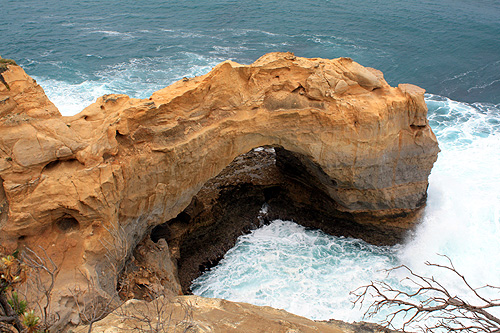
When Stair Hole eventually collapses it will form a cove.Ī topographic map of Coyote Natural Bridge in Utah shows how the meandering Coyote Gulch carved a shorter route through the rock under the arch. Good examples of this type of arch are the Durdle Door and Stair Hole near Lulworth Cove on Dorset's Jurassic Coast in south England.

The wave action along concordant coastlines breaks through the strong rock and then erodes the weak rock very quickly. On concordant coastlines rock types run parallel to the coastline, with weak rock such as shale protected by stronger rock such as limestone. When these arches eventually collapse, they form stacks and stumps. Two examples of this type of arch are London Arch-previously known as London Bridge-in Victoria, Australia, and Neill Island in the Andaman Islands, India. Wave refraction concentrates the wave energy on the headland, and an arch forms when caves break through the headland.

On discordant coastlines rock types run at 90° to the coast. On coasts two different types of arches can form depending on the geology. The Azure Window, Malta, which collapsed in 2017 The largest natural arch, by a significant margin, is the Xianren Bridge in China, with a span of 122 ± 5 meters (400 ± 15 ft). By contrast, the Dictionary of Geological Terms defines a natural bridge as a "natural arch that spans a valley of erosion." The Natural Arch and Bridge Society identifies a bridge as a subtype of arch that is primarily water-formed. The choice between bridge and arch is somewhat arbitrary. The erosional processes exploit weaknesses in the softer rock layers making cracks larger and removing material more quickly than the caprock however, the caprock itself continues to erode after an arch has formed, which will ultimately lead to collapse. The alcoves erode further into the formation eventually meeting underneath the harder caprock layer, thus creating an arch. The softer rock stratum erodes away creating rock shelters, or alcoves, on opposite sides of the formation beneath the relatively harder stratum, or caprock, above it. The formations become narrower due to erosion over geologic time scales.

Most natural arches are formed from narrow fins and sea stacks composed of sandstone or limestone with steep, often vertical, cliff faces. Natural arches commonly form where inland cliffs, coastal cliffs, fins or stacks are subject to erosion from the sea, rivers or weathering ( subaerial processes). Delicate Arch in Arches National Park, Utah, United StatesĪ natural arch, natural bridge, or (less commonly) rock arch is a natural landform where an arch has formed with an opening underneath.


 0 kommentar(er)
0 kommentar(er)
